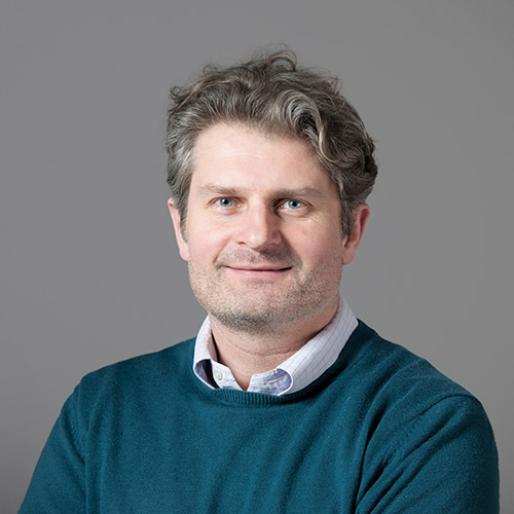The big picture: using wildflower strips for pest control
A new study using forensic techniques has concluded that soil loss from sugar cane plantations makes up the main proportion of sediments in three Brazilian rivers. The results confirm that retaining natural vegetation on riverbanks would be the best way to reduce soil erosion from farmland.
This study looked at sediment sources within three sub-catchments of the Ipojuca River in North-East Brazil. Both bed and suspended sediment samples were collected, and two types of sources were sampled: surface and subsurface. The samples were analysed for fingerprints that could be used to differentiate between differing land use patterns.
Surface (i.e., sugarcane croplands) sources contributed the highest proportions to suspended sediments in two of the sub-catchments. The quality of riverbank management had a noticeable impact on sediment profiles. Overall, say the researchers, sediment control management measures, such as the revegetation of riparian forests, need to be implemented to better control accelerated soil loss.
“With heavier rainfall expected under climate change, soil erosion due to water runoff will likely increase. Studies like this show the importance of improving riverbank management to help intercept sediment runoff for protecting river water quality.”
“Sugarcane a hugely important crop in the humid coastal areas of the state of Pernambuco in Brazil’s north-east,” said Rothamsted’s Prof Adie Collins who was involved with the study alongside partners at the Universidade Federal do Piauí, Universidade Federal Rural de Pernambuco and Universidade Federal do Rio Grande do Sul. “With heavier rainfall expected under climate change, soil erosion due to water runoff will likely increase. Studies like this show the importance of improving riverbank management to help intercept sediment runoff for protecting river water quality.”

Although they generally contributed less than surface sources, subsurface sources (i.e., channel banks and unpaved roads) were nevertheless important. Here, channel banks were generally more important than unpaved roads, reflecting the existence of tall, uncovered bank faces formed by the river network, with limited vegetation protection.
Each sub-catchment demonstrated variations in sediment source contributions. Therefore, sub-catchment-specific sediment management measures need to be implemented. However, riparian forests revegetation, in compliance with current Brazilian legislation, could be an efficient common sediment control measure. This practice can stabilize riverbanks and reduce sediment inputs in the longer term. Currently, the law requires the maintenance of native vegetation protection areas with a fixed width along watercourses. Previous studies have reported that a 15 m wide filter strip of native forests between the stream bank and agricultural areas is sufficient to improve river system protection.

Science Director
Rothamsted Research is the longest-running agricultural research institute in the world. We work from gene to field with a proud history of ground-breaking
discoveries in areas as diverse as crop management, statistical interpretation and soil health. Our founders, in 1843, were the pioneers of modern
agriculture, and we are known for our imaginative science and our collaborative approach to developing innovative farm practice.
Through independent research, we make significant contributions to improving agri-food systems in the UK and internationally, with
economic impact estimated to exceed £3 bn in annual contribution to the UK economy. Our strength lies in our systems approach, which combines strategic research,
interdisciplinary teams and multiple partnerships.
Rothamsted is home to three unique National Bioscience Research Infrastructures which are open to researchers from all over the world:
The Long-Term Experiments,
Rothamsted Insect Survey and the
North Wyke Farm Platform.
We are strategically funded by the Biotechnology and Biological Sciences Research Council (BBSRC), with additional support from other national and
international funding streams, and from industry. We are also supported by the Lawes Agricultural Trust (LAT).
The Biotechnology and Biological Sciences Research Council is part of UK Research and Innovation, a non-departmental public body funded by a grant-in-aid
from the UK government.
BBSRC invests to push back the frontiers of biology and deliver a healthy, prosperous and sustainable future. Through our investments, we build and support a vibrant,
dynamic and inclusive community which delivers ground-breaking discoveries and develops bio-based solutions that contribute to tackling global challenges,
such as sustainable food production, climate change, and healthy ageing.
As part of UK Research and Innovation (UKRI), we not only play a pivotal role in fostering connections that enable the UK’s world-class research and innovation system
to flourish – we also have a responsibility to enable the creation of a research culture that is diverse, resilient, and engaged.
BBSRC proudly forges interdisciplinary collaborations where excellent bioscience has a fundamental role. We pioneer approaches that enhance the equality, diversity,
and inclusion of talent by investing in people, infrastructure, technologies, and partnerships on a global scale.
The Lawes Agricultural Trust, established in 1889 by Sir John Bennet Lawes, supports Rothamsted Research’s national and international agricultural science through the provision of land, facilities and funding. LAT, a charitable trust, owns the estates at Harpenden and Broom's Barn, including many of the buildings used by Rothamsted Research. LAT provides an annual research grant to the Director, accommodation for nearly 200 people, and support for fellowships for young scientists from developing countries. LAT also makes capital grants to help modernise facilities at Rothamsted, or invests in new buildings.